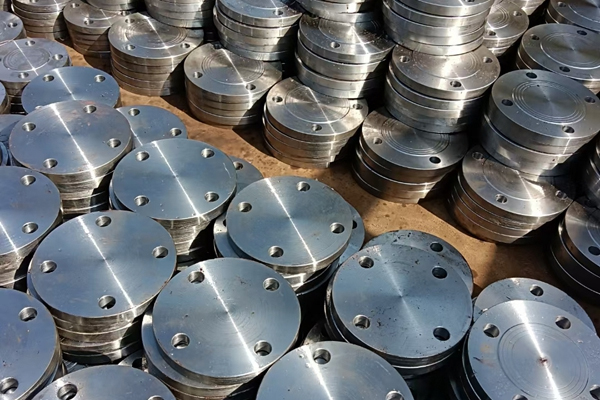What do you know about blind boards?
The formal name of blind plate is flange cap, some also called blind flange or pipe plug. It is a flange without a hole in the middle, used to seal the pipe mouth. The FUNCTION IS THE same AS the head and the tube cap, except that the blind seal is a deTAChable sealing device, and the head seal is not ready to be opened again. There are many types of sealing surface, including plane, convex surface, concave and convex surface, tenon surface and ring connecting surface. Material: carbon steel, stainless steel, alloy steel, copper, aluminum, PVC and PPR.
The blind plate is mainly used for the complete isolation of the production medium to prevent the production from being affected by the lax closure of the cut-off valve and even causing accidents. The blind plate should be set in the parts that require isolation, such as the equipment nozzle, before and after the cut-off valve or between the two flanges. The figure 8 blind plate is often recommended. For pressing, purging and other one-time use parts can also use the plug plate (circular blind plate).

1. In the initial start-up preparation stage, the strength test or tightness test of the pipeline cannot be carried out at the same time as the connected equipment (such as turbine, compressor, gasifier, reactor, etc.), and the blind plate should be set at the connection between the equipment and the pipeline.
2. For all kinds of process material pipelines connected to the boundary area outside the boundary area, when the device stops, if the pipeline is still in operation, set a blind plate at the cut-off valve.
3. If the device is multi-series, the main pipe from outside the boundary area is divided into thousands of pipe channels into each series, and the cutoff valve of each pipe channel is set up with a terminating plate.
4. When the device needs regular maintenance, inspection or mutual switching, the equipment involved needs to be completely isolated, and the blind plate is set at the cut-off valve.
5. When the charging and pressure pipeline and replacement gas pipeline (such as nitrogen pipeline and compressed air pipeline) are connected with the equipment, the blind plate should be set at the cut-off valve.
6. Clean the low point of equipment and pipeline. If the process medium needs to be centralized into a unified collection system, set the blind plate after the cut-off valve.
7. Blind plates or wire plugs should be set behind valves for exhaust pipes, liquid discharge pipes and sampling pipes of equipment and pipelines. Non-toxic, non-hazardous to health and non-explosive materials are excluded.
8. When the installation is constructed by stages, the blind plate should be set at the cut-off valve for the pipes connected with each other, so as to facilitate the subsequent construction.
9. When the device is in normal production, some auxiliary pipes that need to be completely cut off should also be equipped with blind plates. ? [1]?
Matters needing attention
1. On the premise of meeting the process requirements, set as few blind plates as possible.
2. The set blind plate must indicate normal opening or normal closing.
3. The part of the blind plate set in the cut-off valve, upstream or downstream, should be determined according to the cut-off effect, safety and process requirements.
The national standard
Steel pipe flange cover GB/T 9123-2010
Marine blind steel flange GB/T4450-1995
The industry standard
Ministry of Chemical Industry standards
HG20592-2009
HG20615-2009
HG20601-97
Mechanical Department standard
JB/T86.1-94
JB/T86.2-94
Power line standard
D-GD86-0513